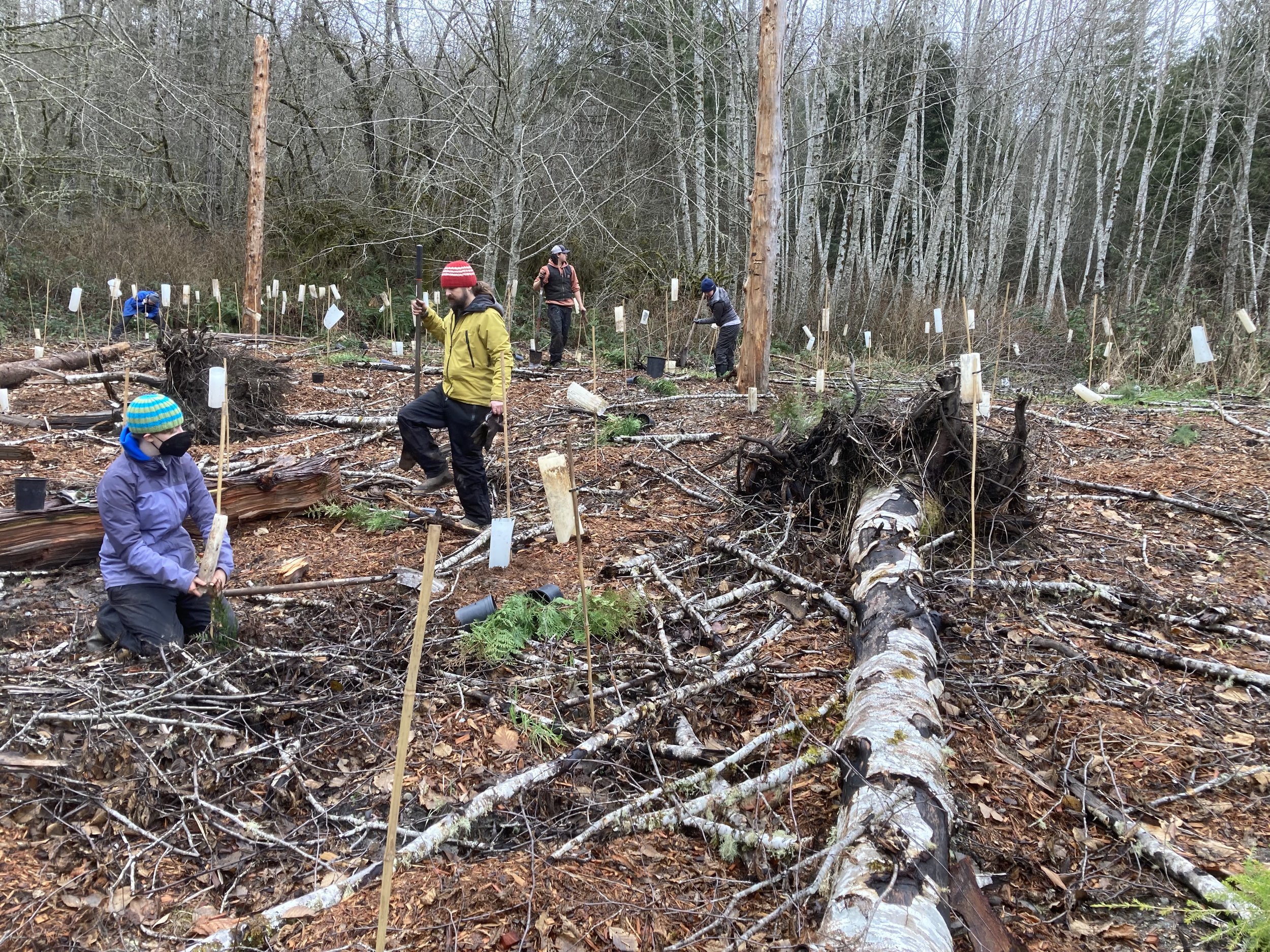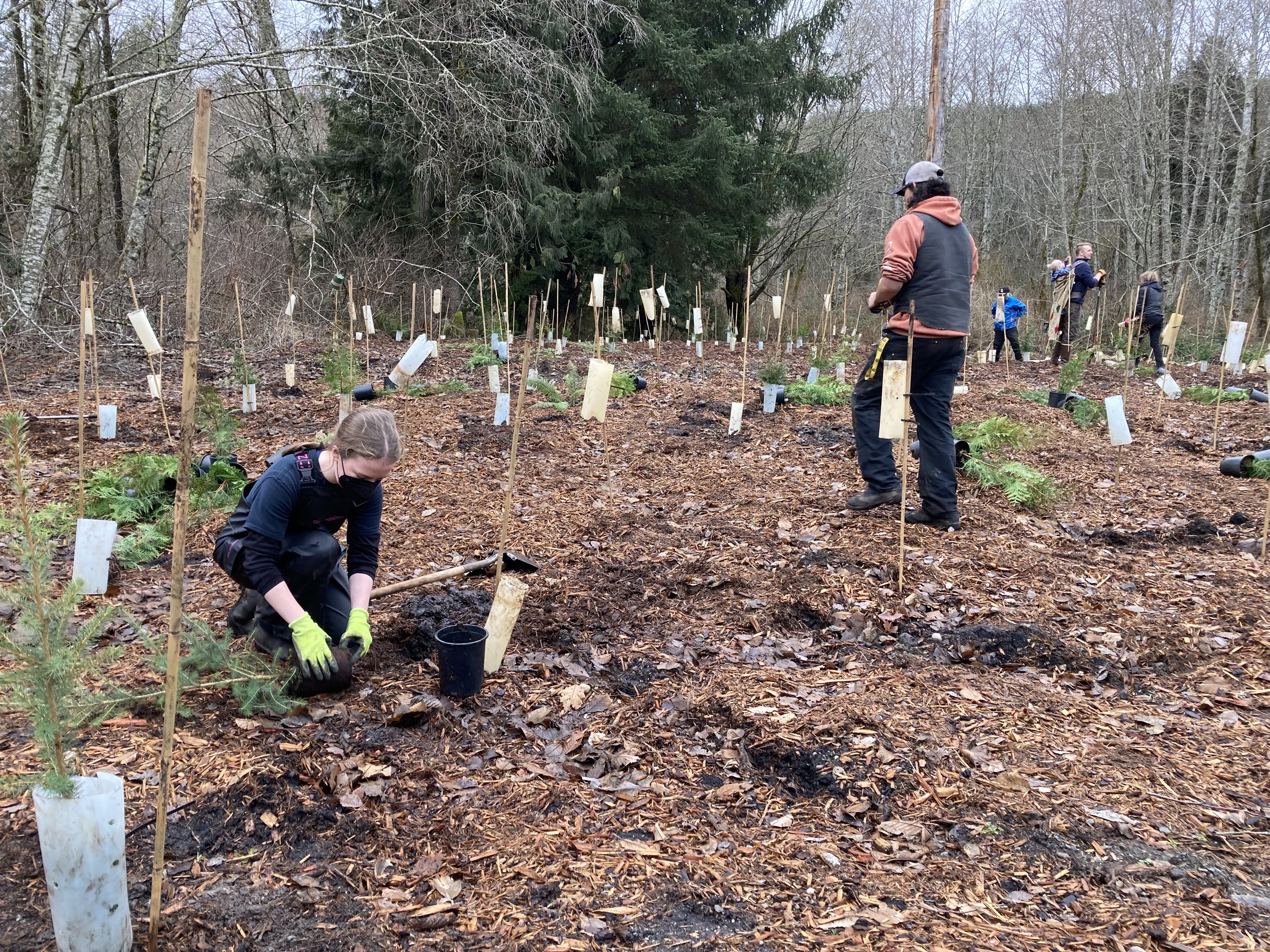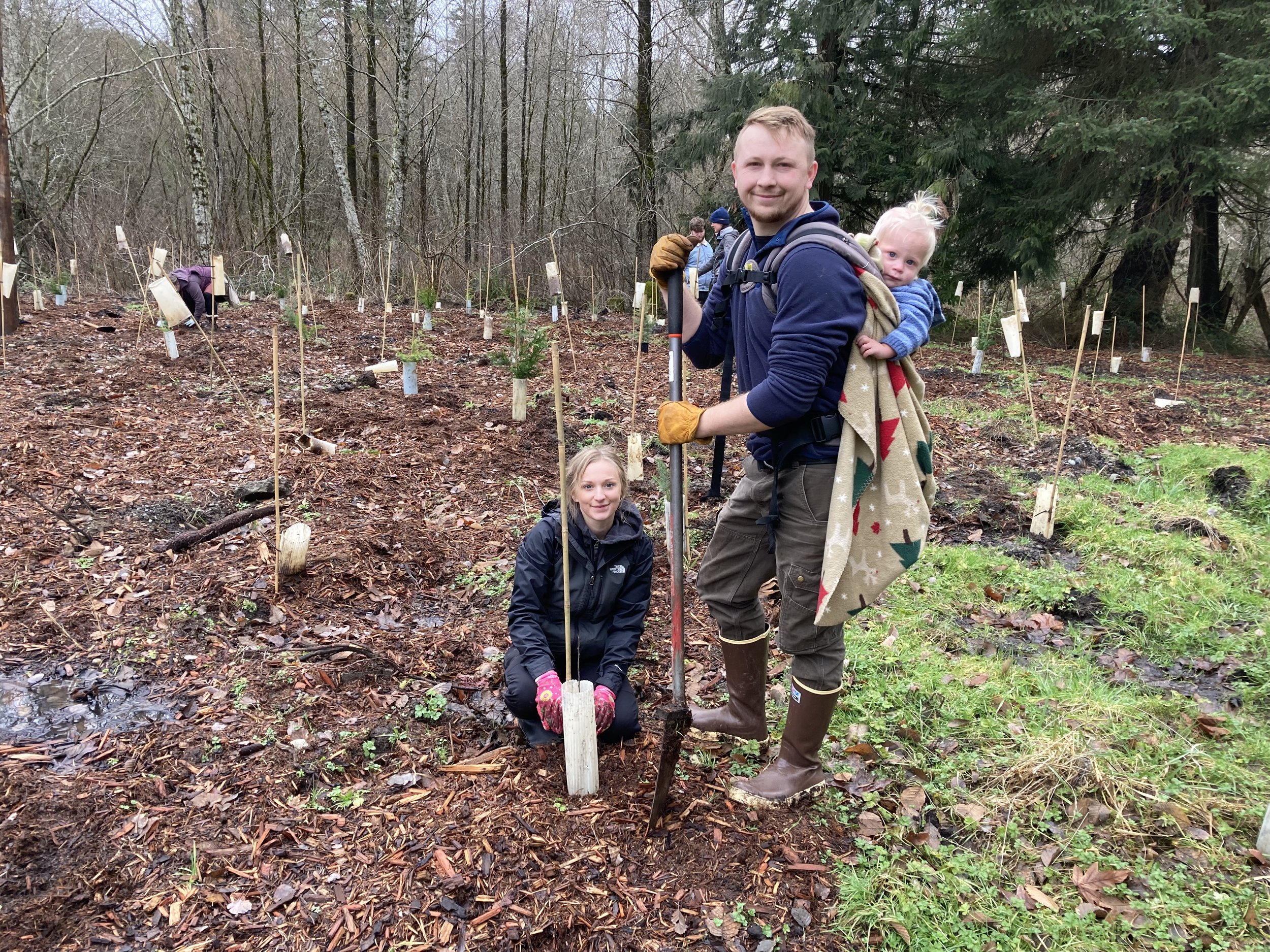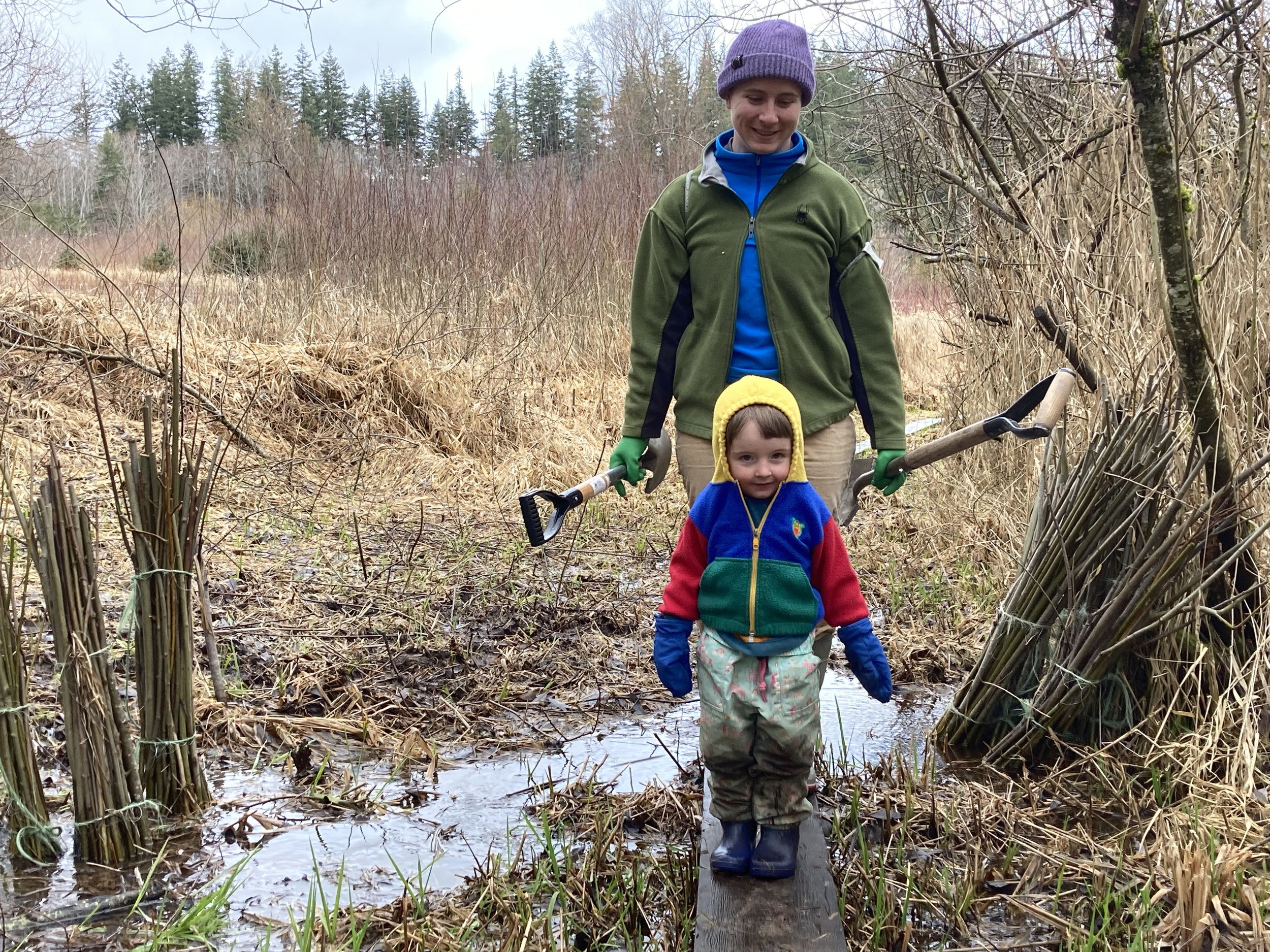2023 Annual Plant-A-Thon! (…all those Satsuma’s you purchased)
-by Dave Dunn, Front End Manager at The Food Co-op
I am sure many of you are aware of the annual Plant-A-Thon put on by the Northwest Watershed Institute (NWI), where student volunteers are brought together to plant native trees and plants in areas that have been degraded along Tarboo Creek and Dabob Bay. The Food Coop has a long history of involvement with the Plant-A-Thon and this year’s Satsuma fundraiser raised $1,800 to purchase plants and other supplies. This year, I was lucky enough to be invited by my daughter, Willow, to join her for this year’s Plant-A-Thon where we would be restoring wetland areas at two previous homestead sites adjacent to Tarboo Creek in Quilcene.
The weather promised to be rainy, but it ended just as we arrived at 9:00am. There, we joined a smattering of student leaders from the Chimacum Pi Program and OCEAN K-12 Program for a short crew leader training. Here, Megan Brookens, Education and Outreach Director at NWI, met up with us to give us some background information on the sites and types of plants, learn about planting techniques, and break into smaller groups for each planting zone.
Our part in the restoration plan was to plant native trees and shrubs thickly throughout the two sites to help restore the area and to discourage the growth of invasive plant species such as Reed Canary Grass and Himalayan Blackberry. We planted various species, such as Osoberry, Western Redcedar, Salmonberry, Sword Fern, Spirea, Douglas Fir, Grand Fir, Western Hemlock, and Vine Maple.
NWI’s professional restoration crew had already placed bamboo stakes with tree protectors to show us where to plant. That just left the job of planting for us. Our job was simple: dig a hole to fit your plant, put your plant in the hole, put dirt back in, wrap your plant gently in a protective hard plastic cylinder, and zip tie the tree protector to a bamboo stake. Well, volunteers got started and together we quickly began transforming the landscape.
By the end of the project, it became apparent that though our work was simple, our actions can add up to big change. All the plants at the first site were planted, and almost all the plants at the second site —about 900 plants in total! The sites looked completely changed with all these new plants in place. You could just feel the potential of our simple work--we were a part of the transformation of the watershed. The work we did may be just a tiny blip in the existence of some of the plants we planted, but without our actions this transformation may never have occurred. Maybe in a few hundred years, some of these trees will still be here, shading salmon in Tarboo Creek and along its side channels. Possibly our descendants will fish for salmon in a fully restored Tarboo Creek, running with clear, cold water shaded by trees planted by us. Needless to say, this work felt pretty empowering—with a little effort, we can make positive change.
If you want to feel that same sense of empowerment, consider joining an upcoming volunteer project with NWI. Once a month, students and community volunteers come together at Dabob Days volunteer events to support ongoing restoration projects along Tarboo Creek and Dabob Bay. If you are interested, contact Megan Brookens at megan@nwwatershed.org to sign up. To learn more about the work of NWI you can visit www.nwwatershed.org.




